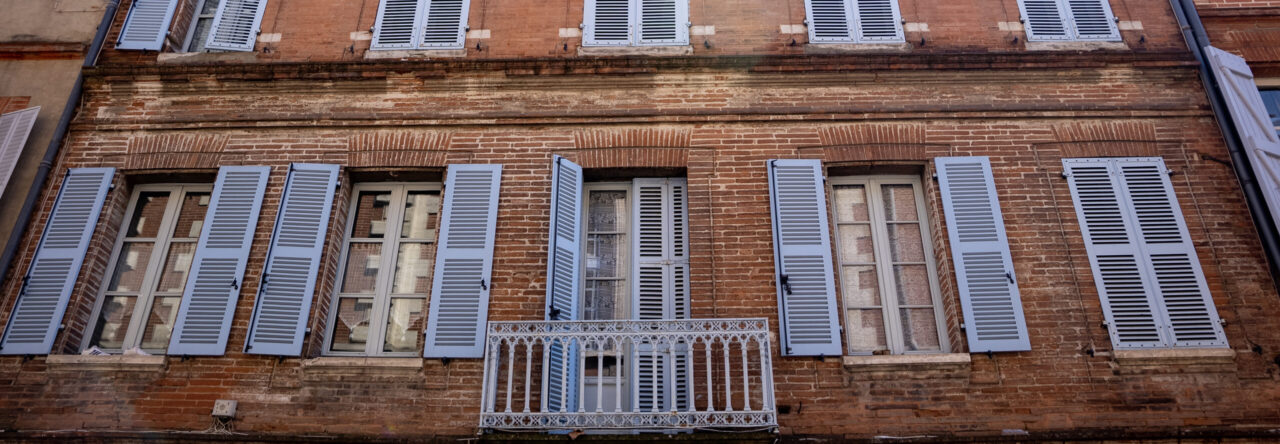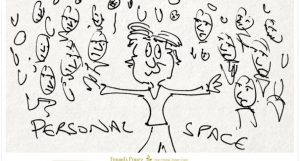Editors: Brendan, Emma, Nicole and Sara
Living, studying, and conducting service projects allows us, as Americans in France, to learn more about the differences between these two cultures and ways of life. While many of these differences have become somewhat normal and generally accepted for us as current residents of Toulouse, we are still taken aback when we encounter French students who are extremely curious about gun culture in the U.S. As part of a service project for our program Emma helps teach English classes at a French school. While aiding high school seniors in their preparation for the BAC exam at the end of the year, they focused on gun culture in America and how it affects our country’s politics. In several discussions with the French students, they asked her several questions regarding the topic, but the one question that stuck with Emma was: do you own a gun? Their question surprised her because they were so serious about it and they assumed that she would own one, as a 21 year old college student. This question arose from more than just a few students which led us to consider more closely the role of guns in American society vs. French society.
To understand the vast cultural differences on the societal place of guns in each country, one must understand the laws regulating firearms, starting with the United States. As most Americans would know, the right to keep and bear arms is protected by the Second Amendment of the Constitution and as a further level of protection, most state constitutions guarantee this right. Given the fact that gun ownership is so ingrained into the foundation of the United States, it is no surprise that this issue is divisive. In terms of possession and ownership of a firearm, the laws vary state by state. Generally accepted laws include the prohibition of firearm sales to convicted felons, domestic abusers, fugitives, addicts of an illegal substance, those who are deemed mentally unstable, veterans who have been dishonorably discharged, and those who have renounced U.S. citizenship. Regarding the regulation of both open and concealed carry of a firearm, laws have changed dramatically since the early 2000’s. In most states, a license is required to carry a handgun and is permitted to qualified applicants, however eleven states still allow concealed carry of a firearm without a permit. This is called “Constitutional carry”. Twenty-six states allow open-carry of handguns without a permit and four states plus Washington D.C. have banned open-carry of handguns.
the right to keep and bear arms is protected by the Second Amendment of the Constitution and as a further level of protection, most state constitutions guarantee this right. Given the fact that gun ownership is so ingrained into the foundation of the United States, it is no surprise that this issue is divisive. In terms of possession and ownership of a firearm, the laws vary state by state. Generally accepted laws include the prohibition of firearm sales to convicted felons, domestic abusers, fugitives, addicts of an illegal substance, those who are deemed mentally unstable, veterans who have been dishonorably discharged, and those who have renounced U.S. citizenship. Regarding the regulation of both open and concealed carry of a firearm, laws have changed dramatically since the early 2000’s. In most states, a license is required to carry a handgun and is permitted to qualified applicants, however eleven states still allow concealed carry of a firearm without a permit. This is called “Constitutional carry”. Twenty-six states allow open-carry of handguns without a permit and four states plus Washington D.C. have banned open-carry of handguns.
As one would expect, the laws are much different in the European Union. In France specifically, a hunting license or sport-shooting license is required to purchase any firearm. These licenses are broken down into 4 categories which determine specific regulations and must be renewed repeatedly. These regulations can get complicated, but the main thing to understand is that there is no right to bear arms. The punishment for illegally having a gun is a maximum of 7 years in prison and a fine. In 2012, the French government estimated that there were at least 7.5 million guns legally in circulation. Logically, this number is a far cry from the enormous estimated 393 million legally owned arms in the United States.
The differences in gun culture between France and the United States is reflected not just in legislation and gun owner statistics, but by extension in the way their respective citizens think. Having grown up in America where guns are so easily accessible and owned by many, when an argument between two people starts to get too heated, when someone looks alone and disturbed in a public place, or when she’s alone with someone following her, Sara’s first thought is to be cautious and aware of her surroundings because those people might have guns. One day she was explaining this feeling to the mother of her French host family and she was shocked that Sara instinctively thought in this manner. They discussed how Sara’s response is totally different than the reaction of a French person. For them, the idea of an average citizen having a gun doesn’t even cross their mind as a possibility, while for an American it’s a likely and dangerous possibility that influences both our sense of security and our thought process.
However, in an interesting turn of events, Nicole was also mildly shocked to be greeted by French military police carrying what appeared to be large, semi-automatic arms stationed casually in the Toulouse Blagnac airport. For her, whenever she sees military personnel or police carrying serious firearms, she automatically assumes something is horribly wrong. Her first instinct is to get herself as far as possible from them for fear of whatever they are dealing with. In the US, normal police carry only a handgun, and in her experience, there are no military police stationed in airports unless there has been a bomb threat. However, as she spends more time in France, the phenomenon of heavily armed military police is becoming more normal and less alarming. The interesting and somewhat ironic twist to this is that while she is American and Americans in general carry more firearms, she seems to be less used to seeing men carrying large guns than her French counterparts. So while the French are equal parts fascinated and alarmed by American civilian gun laws, one could also say that she too was very surprised by guns in France.
The differences in gun rights between France and the United States provoke both cultural differences and varying points of view. Civilian carry of firearms is legal in the US and widespread, causing the French to believe in the stereotype that every American carries a gun and that every American is used to seeing guns. However, for Nicole personally, the reality is quite the opposite. Not only does she not own a gun, she is not used to seeing them, though the fear of someone carrying a firearm is always present in tense situations. In fact, she was uncomfortable to be around military police carrying semi-automatic firearms whereas the other French citizens appeared to be completely at ease. However for a French citizen, the idea of owning their own gun is outlandish and strange. We find this large cultural difference interesting, as we believe it is an accurate reflection of each country’s founding principles. In France, the people believe strongly in the government and its ability to care for them, an attitude typical of a socialist country. However in the United States, a country founded on principles of individual liberty and a mistrust of the English government, people are more likely to distrust the government and place more faith in themselves. Being able to carry your own firearm to protect yourself in the absence of government protection is one of the most direct manifestations of the powerful belief in individual liberty: taking matters into your own hands in light of a lack of confidence in the government’s ability to take care of its citizens. While the US right to carry firearms is meant to ensure individual liberty and security, for some of us it provokes a sense of insecurity around strangers. However in France, even though people do not have the liberty to carry firearms, they are free from the same sort of fear and suspicion of people in public. Who is the most free: Americans who have the legal right to carry a gun, or the French who do not fear for their life in heated situations?

















 In Devin and Colby’s experiences, bureaucracy is an important part of the French university system. Colby said that when you need the signature of one single person, the one office has its opening hours at the most common times for classes and they take a very long lunch break, so it’s hard to find the person one needs. Nothing is online and there are random times when some secretarial offices are closed. The situation is the same for Devin in terms of the libraries. The city’s libraries are connected, but the system to check the availability of the novels does not say specifically if the novel is available in a particular library. So, even if the system says that a novel is available, it might be necessary to visit another library in the city in the search for it. In the experience of both of them, the reaction from the French is the same: Devin’s hosts thought her reaction was funny. For Colby, the common reaction he received is that “it’s the French way.”
In Devin and Colby’s experiences, bureaucracy is an important part of the French university system. Colby said that when you need the signature of one single person, the one office has its opening hours at the most common times for classes and they take a very long lunch break, so it’s hard to find the person one needs. Nothing is online and there are random times when some secretarial offices are closed. The situation is the same for Devin in terms of the libraries. The city’s libraries are connected, but the system to check the availability of the novels does not say specifically if the novel is available in a particular library. So, even if the system says that a novel is available, it might be necessary to visit another library in the city in the search for it. In the experience of both of them, the reaction from the French is the same: Devin’s hosts thought her reaction was funny. For Colby, the common reaction he received is that “it’s the French way.”
 Devin goes through H & M, a shop known and frequented by young people and students. Although this shop also exists in the United States, the difference is evident by the dress style of the customers in it.
Devin goes through H & M, a shop known and frequented by young people and students. Although this shop also exists in the United States, the difference is evident by the dress style of the customers in it. Although her teacher guides the students, they are not friends with one another and therefore the link is rather professional. One of her teachers emphasized the importance of choice that these students have, saying, “If you’re in this room, you’re here to learn. You have the choice. You can still stay in bed. But you chose to learn.” This connection produces a dynamic in which students are neither pampered nor patronized. In addition, parents do not pay tuition fees. That is to say, students are the only bosses of this burden or gift that is schooling. In short, the small amounts of exams administered give students the responsibility for understanding the subject, without the professors’ use of a note of participation or attendance. Therefore, it is the decision of the French student to continue the knowledge, and between the professors and the students, there is a mutual respect.
Although her teacher guides the students, they are not friends with one another and therefore the link is rather professional. One of her teachers emphasized the importance of choice that these students have, saying, “If you’re in this room, you’re here to learn. You have the choice. You can still stay in bed. But you chose to learn.” This connection produces a dynamic in which students are neither pampered nor patronized. In addition, parents do not pay tuition fees. That is to say, students are the only bosses of this burden or gift that is schooling. In short, the small amounts of exams administered give students the responsibility for understanding the subject, without the professors’ use of a note of participation or attendance. Therefore, it is the decision of the French student to continue the knowledge, and between the professors and the students, there is a mutual respect.
 bags in France. In many grocery stores in French, the cashiers do not give out plastic bags for bagging food. In fact, if you do not bring your own bag, you can buy a reusable bag at the cash register for a few euros. A student, Isy, notes that “Normally these bags are made with paper, they do not exist in many groceries or stores that give people free plastic bags. There are types of plastic bags still exist in France which have not been banned and such bags can be used for fruits and vegetables. These bags must meet the minimum standard of being a biosourced material and must compostable. With this change, France has gotten rid of millions of plastic bags that could potentially pollute the enviroment.
bags in France. In many grocery stores in French, the cashiers do not give out plastic bags for bagging food. In fact, if you do not bring your own bag, you can buy a reusable bag at the cash register for a few euros. A student, Isy, notes that “Normally these bags are made with paper, they do not exist in many groceries or stores that give people free plastic bags. There are types of plastic bags still exist in France which have not been banned and such bags can be used for fruits and vegetables. These bags must meet the minimum standard of being a biosourced material and must compostable. With this change, France has gotten rid of millions of plastic bags that could potentially pollute the enviroment. The French have an individual relationship, and also a social relationship regarding the use of cigarettes. Compared to the United States, one observes that there are many more smokers in France and you can see a culture that is more tolerant of smokers. As Nadia observed, “…In the United States, there is a sort of prejudice against people who smoke, especially close to children. But here, in Toulouse, there is not this same mentality. I have made some French friends and they told me that they smoke for its social aspects. Often, when a friend leaves to smoke a cigarette, the others leave with them to continue the conversation. » As Nadia remarked well, it is clear to see there is a more social aspect than one that is more attentive to the environment and health. In the United States, people think more about the negative consequences of smoking and that the social aspect is not a reason that is more imprtant than health considerations.
The French have an individual relationship, and also a social relationship regarding the use of cigarettes. Compared to the United States, one observes that there are many more smokers in France and you can see a culture that is more tolerant of smokers. As Nadia observed, “…In the United States, there is a sort of prejudice against people who smoke, especially close to children. But here, in Toulouse, there is not this same mentality. I have made some French friends and they told me that they smoke for its social aspects. Often, when a friend leaves to smoke a cigarette, the others leave with them to continue the conversation. » As Nadia remarked well, it is clear to see there is a more social aspect than one that is more attentive to the environment and health. In the United States, people think more about the negative consequences of smoking and that the social aspect is not a reason that is more imprtant than health considerations.


